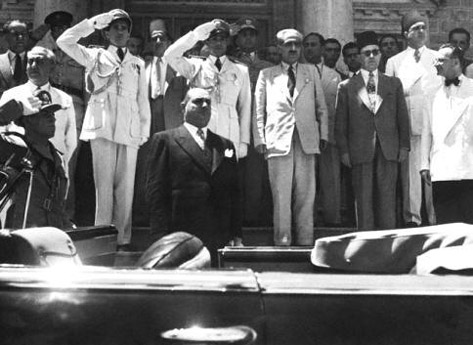Syria 1949

Chief of staff Husni Zaim
By 1949, U.S. officials were not only concerned about Syria's stance on Israel, border disputes with Turkey, and oil pipelines, but had begun to worry that the left was growing in power and that the government was growing friendlier to the Soviet Union. When demonstrations led to the resignation of the prime minister, the U.S. assistant military attaché, who was in reality a CIA officer, began to meet with the Syrian chief of staff, Husni Zaim, to plan a coup. Soon after, Zaim “requested U.S. agents provoke and abet internal disturbances which ‘essential for coup d'etat' or that U.S. funds be given him this purpose.” We do not know the U.S. response to this specific request, but the CIA officer did promise rapid recognition after a coup with, presumably, a handsome aid package to follow. This is exactly how events began to unfold, although, as we pointed out in chapter three, the process was interrupted after less than five months when Zaim was himself overthrown in another coup. Government then followed government in rapid succession, with civilian cabinets rising and falling, interspersed with additional coups. From time to time, right-wing officers approached the U.S. for help or guidance on possible coups, one of which in fact involved the assassination of the country's left-leaning leader (the extent of prior U.S. knowledge about this murder is unclear). 1
1) Zaim, quoted in Meade to G-2, 18 March 1949 (Little 1990: 56); Little (2004: 670-7).
